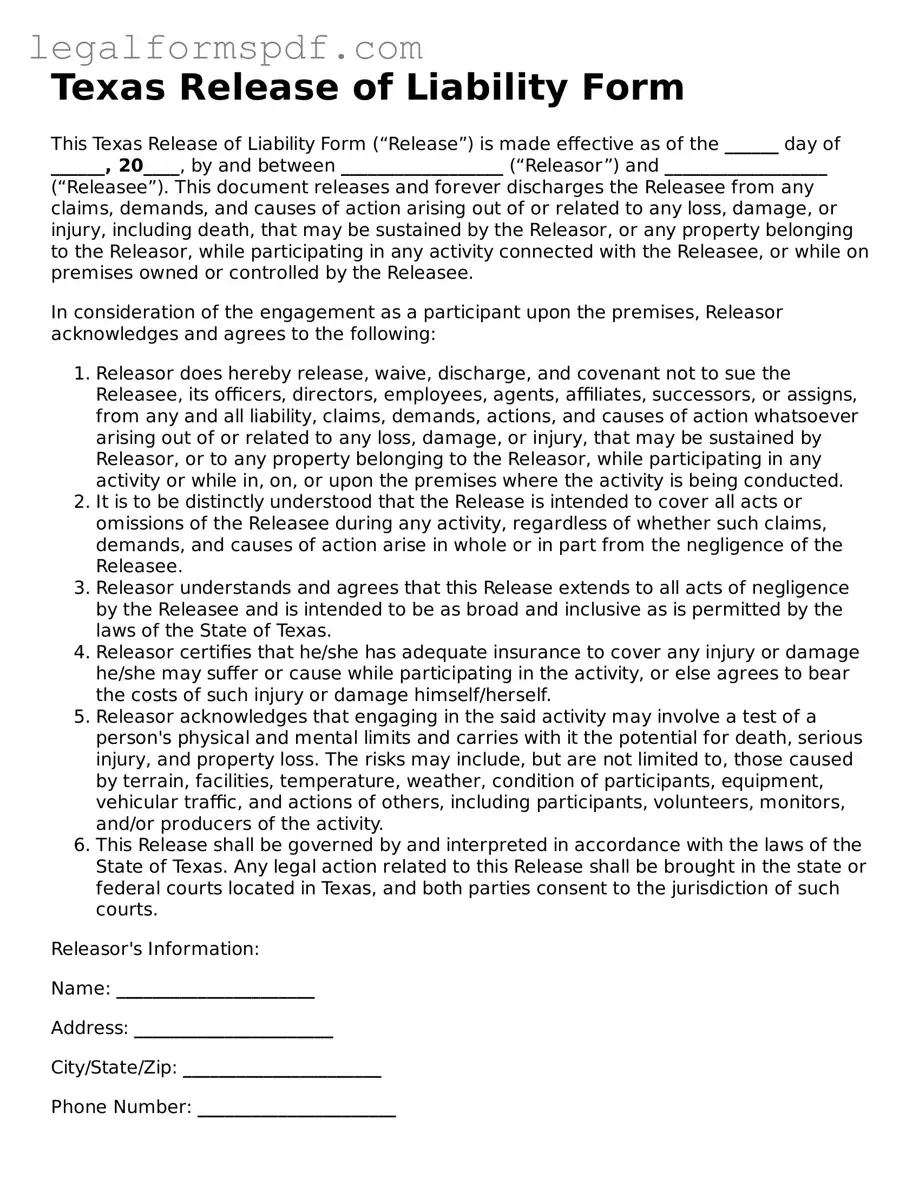What is a Texas Release of Liability form?
A Texas Release of Liability form is a legal document that, when signed, indicates that one party agrees not to hold another party responsible for any injuries, damages, or losses that might occur, particularly in the context of an activity, event, or transaction. This form is commonly used when selling personal property, such as a car, or participating in potentially risky activities.
When should a Texas Release of Liability form be used?
This form should be used during the sale of any personal property (like vehicles or electronics), in events that involve physical activity (sports, recreational activities), or in services that carry potential risks. It helps protect the party providing the service or property from future legal claims.
Is a Texas Release of Liability legally binding?
Yes, once signed by all involved parties, the Texas Release of Liability becomes a legally binding agreement. It is essential that all parties fully understand the terms and conditions before signing.
What information needs to be included in a Texas Release of Liability form?
The form should include the full names and addresses of both parties (the "Releasor" who is giving up their right to sue and the "Releasee" who is being protected), a detailed description of the activity or property involved, the specific risks being acknowledged, and the date of the agreement. It should also clearly state that the Releasor understands the risks and agrees to not hold the Releasee liable.
Do both parties need to sign the Texas Release of Liability form?
Yes, for the document to be effective and enforceable, both the Releasor and the Releasee must sign the form. It's also advisable to have the signatures witnessed or notarized for additional verification.
Can a Texas Release of Liability form be revoked?
Once signed, it's challenging to revoke a Texas Release of Liability form as it is a legally binding agreement. However, in certain circumstances, if it can be proven that the agreement was signed under duress, with deceit involved, or without a full understanding of the terms, it may be possible to contest it.
What happens if there is no Texas Release of Liability form in place?
Without a Texas Release of Liability form, the party providing the service or property (Releasee) may be exposed to legal claims or lawsuits if the other party (Releasor) suffers any injuries, losses, or damages related to the activity or transaction. The absence of this form makes it easier for disputes to escalate to legal action.
Are there any exceptions to the protections offered by a Texas Release of Liability form?
While this form provides a significant level of protection, it may not absolve a party from liability for gross negligence, willful misconduct, or illegal activities, even if the form is signed. The applicability depends on the nature of the incident and the laws governing liability and negligence in Texas.
Can minors sign a Texas Release of Liability form?
In Texas, minors (individuals under 18 years of age) cannot legally sign a Release of Liability form. Instead, a parent or legal guardian must sign the form on their behalf to acknowledge and accept the risks of the activity or transaction.
How can I ensure my Texas Release of Liability form is effective?
To ensure the form is effective, make sure it contains clear and comprehensive language about the risks involved, is signed by all necessary parties, and ideally, have the signatures witnessed or notarized. Additionally, it's advised to consult with a legal professional to verify that the form meets all legal requirements and adequately protects your interests.
